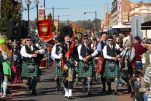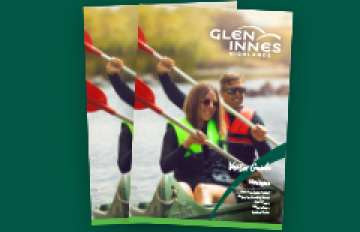Find Your WayAround Glen Innes Highlands
With so many things to do in Glen Innes Highlands we'd like to make it easy for you to get around and explore our area.
You can also drop into the Visitor Information Centre and talk to our friendly Tourism Assistants and Volunteers to get the local knowledge face-to-face.
The Visitor Information Centre has a range of free maps as well as specialty maps to help you get around without Google! Visit the online shop to purchase your way to get around.
-
Partner with us
- Add your business
- Use of GIH logo
-
Related Sites
- Glen Innes Severn Council
- Glen Innes Highlands Hub
Acknowledgement of Country
Glen Innes Highlands acknowledges and pays respect to the Ngarabul people as the traditional custodians of this land, their elders past, present and emerging, and to Torres Strait Islander people and all First Nations people.
Terms & Conditions | Privacy | Disclaimer
Deepwater
30mins from Glen Innes
Deepwater is located 35km North of Glen Innes on the New England Highway.
The village was established in 1838 and is home to a thriving community of 400 people, many still directly related to the original settler families. With the opening of the Great Northern Railway Line in 1886, Deepwater became a bustling township exporting, wool, dairy, livestock, meat and mining products. Today you will find historic buildings still in existence including the Picture Theater, Court House, Post Office, School of Arts, Deepwater Public School, and the General Store. The area is largely agriculturally focused, with the main pursuits being wool, fat lamb and beef cattle production. In January the town comes alive with over 3,000 people visiting for the annual Deepwater Races. While in town enjoy a meal or refreshment. Other popular activities include fishing, site seeing, farm stays and camping along the beautiful river frontage.
Main Attractions
Glencoe
15mins from Glen Innes
The picturesque village of Glencoe is 22km south of Glen Innes.
Glencoe was named by early European settlers after Glencoe, Scotland. The small farming village has an elevation of 1,150 metres and population of approximately 200. The Glencoe Sports ground is located on the northern side of the village and is a great spot for birdwatching. Located north of Glencoe is the Balancing Rock and the scenic views and large boulders at the Stonehenge Recreational Reserve.
Main Attractions
Glen Innes
In the heart of Glen Innes Highlands
Located at the intersection of the New England Highway and the Gwydir Highway, Glen Innes has a population of 6,150.
Experience history with over 30 heritage buildings in the main street of Glen Innes. Visit the Land of the Beardies History Museum with its splendid collection of biographical and historical records. Other attractions include the town parks, fishing, fossicking areas and the Australian Standing Stones. The major events not to miss are the Australian Celtic Festival, Minerama fossicking, Gem and Jewellery Show the largest of its kind in NSW, the Glen Innes Pastoral and Agricultural Show and the prestigious Glen Innes Cup race day. Arts are prevalent in the area, with theatre productions, and live entertainment filling the monthly calendars, beautifully handcrafted products available and multiple art galleries to browse.
Main Attractions
Emmaville
45mins from Glen Innes
Emmaville boomed after the discovery of tin in the local creek in 1872 and was initially known as Vegetable Creek after the Chinese market gardens planted to feed the settlement.
By the early 1900s the mining town’s population swelled to 7000 including 2000 Chinese, with 5 hotels, a joss house, school, postal services and a hospital. Australia’s first Medical Benefits Fund and St John’s Ambulance service both began in Emmaville. Today the town is home to a proud community of 300 people. Take time to explore the streets and many of the original public buildings, miner’s cottages and cemetery. Don’t miss the Emmaville Mining Museum for a real glimpse into the local history. Enjoy a counter meals or drink and have a chat with the locals in one of the town’s original hotels.
Main Attractions
Dundee
16mins from Glen Innes
The little hamlet of Dundee is located between the Deepwater and Glen Innes.
Dundee is the gateway to Rangers Valley Feedlot. Home to the districts first flour mill and the Severn River Rail Bridge – the longest timber truss bridge in Australia. Surrounded by grazing and farming properties, Dundee holds an annual Campdraft which is a fun family event. Visit the historic cemetery with magnificent wrought iron gates and enjoy the scenic countryside.
Main Attractions
Gibraltar Range National Park
Gibraltar National Park is located 79km east of Glen Innes Highlands on the World Heritage Way, is best known for its spectacular granite areas weathered into fantastic outcrops, huge granite tors with names like The Needles, Anvil Rock, Old Man’s Hat – and dazzling spring wildflower displays.
There are some great areas to explore: Gibraltar-Washpool World Heritage walk, Raspberry lookout, Gibraltar Range morning tea and tour, Washpool walking track, Dandahra Crags walking track, Forest walking track - Gibraltar National Park, Mulligans campground, Lyrebird Falls walking track, Murrumbooee Cascades walking track
Main Attractions
Guy Fawkes National Park
Guy Fawkes National Park is a wilderness paradise popular for bushwalking and birdwatching. You can also enjoy fishing, swimming and canoeing along the Boyd River.
The park is popular with experienced bushwalkers who want to explore the Guy Fawkes River Valley, but there are lots of great activities to enjoy among the peaceful gorges and slow-flowing rivers.
Main Attractions
Washpool National Park
Washpool and Gibraltar Range national parks are neighbours and share World Heritage listings as part of the original Gondwana Continent National Parks.
Washpool National Park located 78km east of Glen Innes Highlands on the Gwydir Highway’s World Heritage Way, is best known for its lush, beautiful rainforest, the largest remaining wilderness rainforest in NSW, the world’s tallest stand of coachwood rainforest – and crystal streams.
Main Attractions
Nymboida National Park
Nymboida National Park is the perfect place for the adventurer. If camping in remote, unspoilt beauty surrounded by dramatic landforms while neighbouring the beautiful Nymboida River appeals, point your 4WD towards Nymboida River campground.
Push your canoe out into the river, or take a summer dip while listening for the distinctive chink of the bellbirds. There are no marked tracks, but experienced bushwalkers will love the wild beauty of Nymboida.
This is a quiet campground and you may well have the place to yourself. Even getting there’s an adventure. Old Glen Innes-Grafton Road passes through a historic hand-cut tunnel into the stillness of the deserted valley.
Cast your imagination into the past and you may hear the snap of the reins on the Cobb & Co. coach team, the thud of the timber getter’s axe, or the cry of the bullocky hauling down the track to Clarence River.
Main Attractions
2025 © All Rights Reserved. Website designed by gocrossmedia and built by Cloud Concepts






















